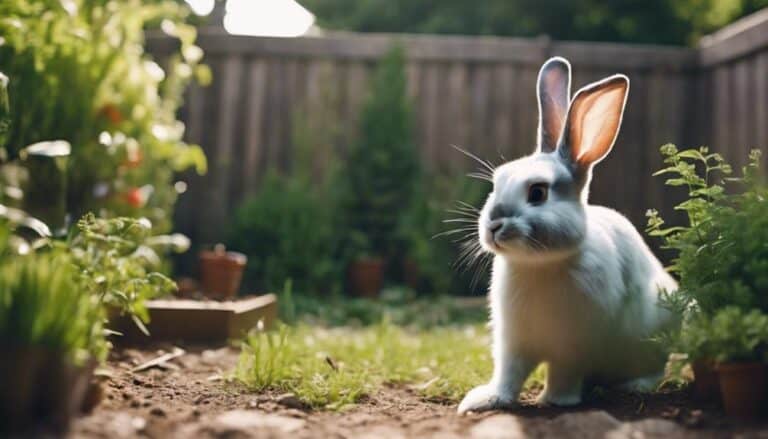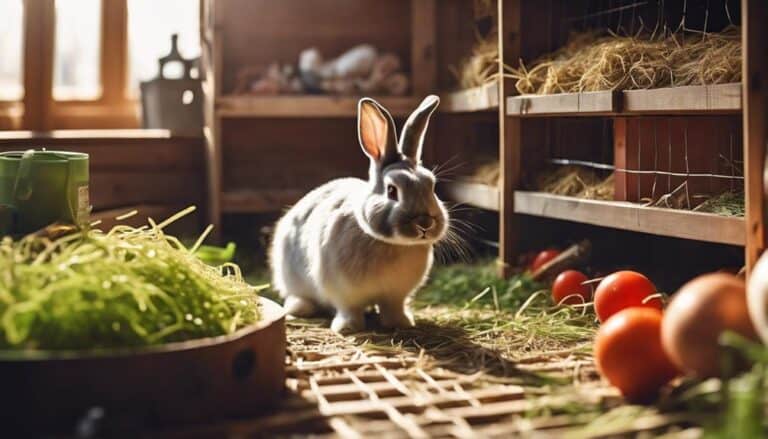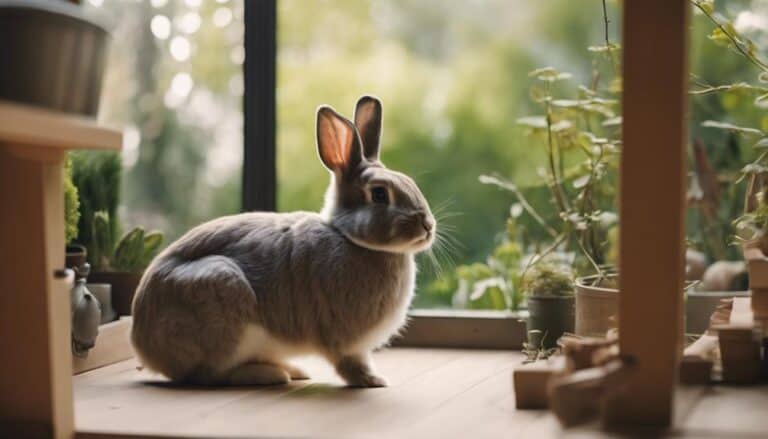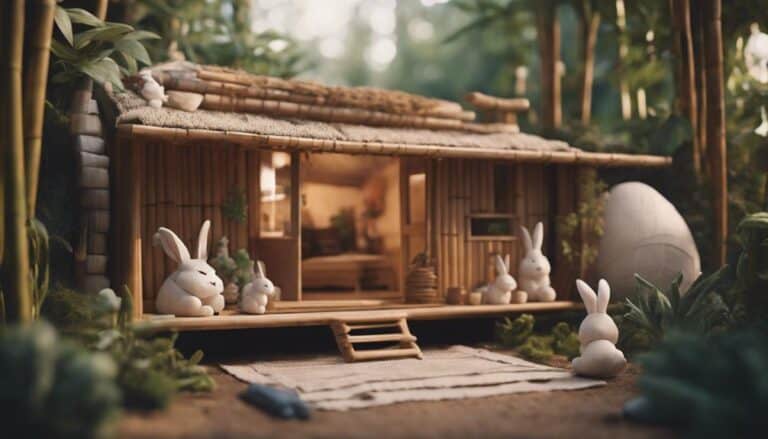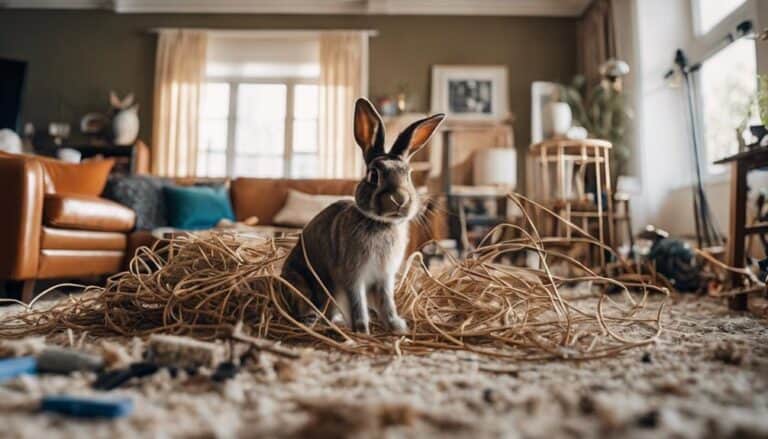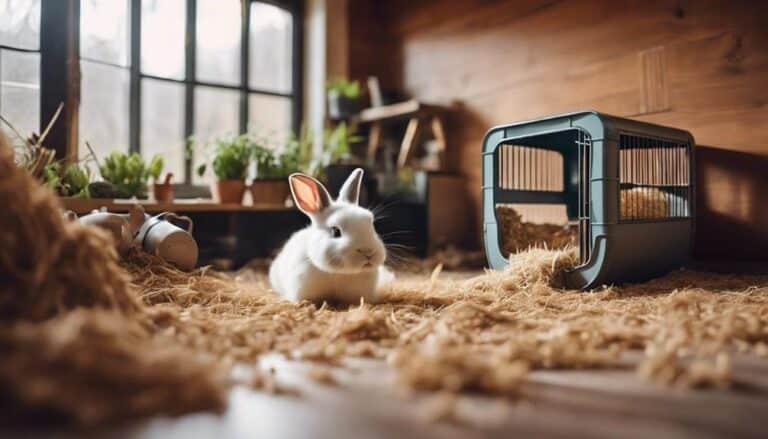If you've ever noticed your bunny displaying signs of stress or restlessness, it could be a signal that their habitat needs some adjustments. Imagine how enriching it would be for your furry friend to have a space that truly mirrors the natural world they instinctively crave.
By implementing the five best tips for natural bunny habitats, you can guarantee a harmonious environment where your bunny can thrive both physically and mentally. Let's explore these expert recommendations that will not only benefit your bunny but also deepen the bond you share.
Contents
Key Takeaways
- Provide ample space and natural elements for rabbits to exhibit natural behaviors and stay healthy.
- Use appropriate bedding and nesting materials to ensure comfort, warmth, and cleanliness for rabbits.
- Offer a diet rich in hay, vegetables, and safe plants to mimic wild rabbits' natural feeding habits.
- Create enriching play areas and safe hideouts to promote physical and mental stimulation for rabbits.
Optimal Space and Layout Design
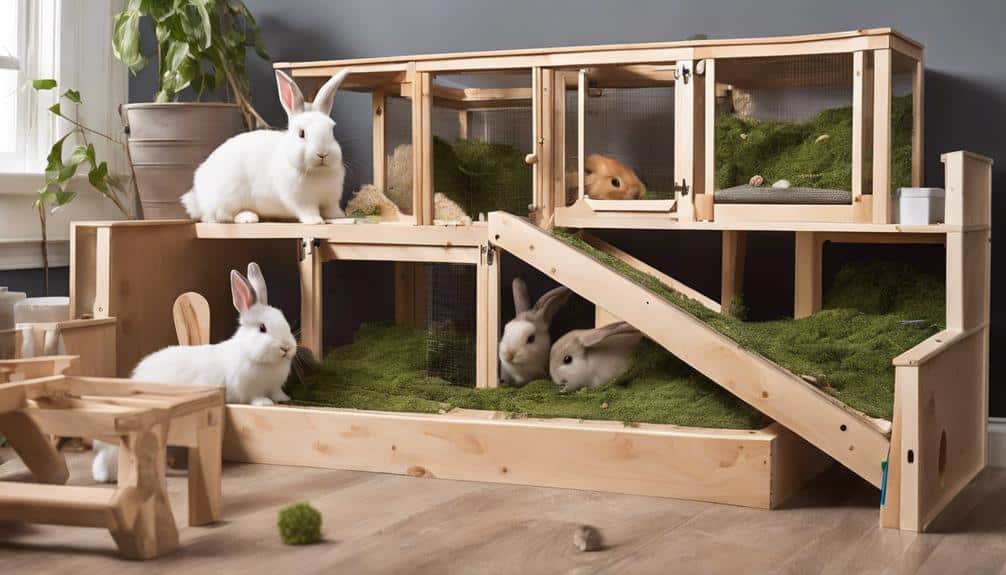
When creating natural habitats for bunnies, providing ample space that allows for running, jumping, and standing comfortably is essential for their physical and mental well-being.
To meet rabbit needs, make sure a living space of at least 10ft x 6ft x 3ft for a pair of rabbits. The shelter should be large, sturdy, waterproof, and raised off the ground to keep them safe and dry.
A well-designed layout includes a litter box, hay rack, and hiding spots for privacy. Outdoor enclosures must offer shade, companionship, and access to water to create a stimulating environment.
Keeping rabbits in a spacious area not only allows for natural behaviors like hopping and exploring but also promotes their happiness and overall health. More space means happier rabbits, so prioritize a generous living space to support their well-being.
Suitable Bedding and Nesting Materials
To make certain the comfort and well-being of your bunnies, selecting suitable bedding and nesting materials is paramount in creating a cozy and safe environment for them. Here are some essential tips for providing the best bedding and nesting materials for your pet rabbits:
- Use soft straw or hay: Pet rabbits need regular access to soft straw or hay for bedding to keep them warm and comfortable. These materials are natural and mimic the rabbits' wild habitats, providing them with a sense of security.
- Avoid cedar or pine shavings: While cedar or pine shavings may seem like suitable options for bedding, they can be harmful to rabbits' respiratory systems. Opt for safer alternatives like straw or hay to ensure your rabbits' health and well-being.
- Provide nesting materials: In addition to bedding, offer nesting materials such as shredded paper or cardboard to allow your rabbits to create cozy and safe spaces for resting and hiding. Monitoring and changing these materials regularly will help maintain cleanliness and freshness in the rabbits' habitat.
Natural Food Sources and Foraging Areas
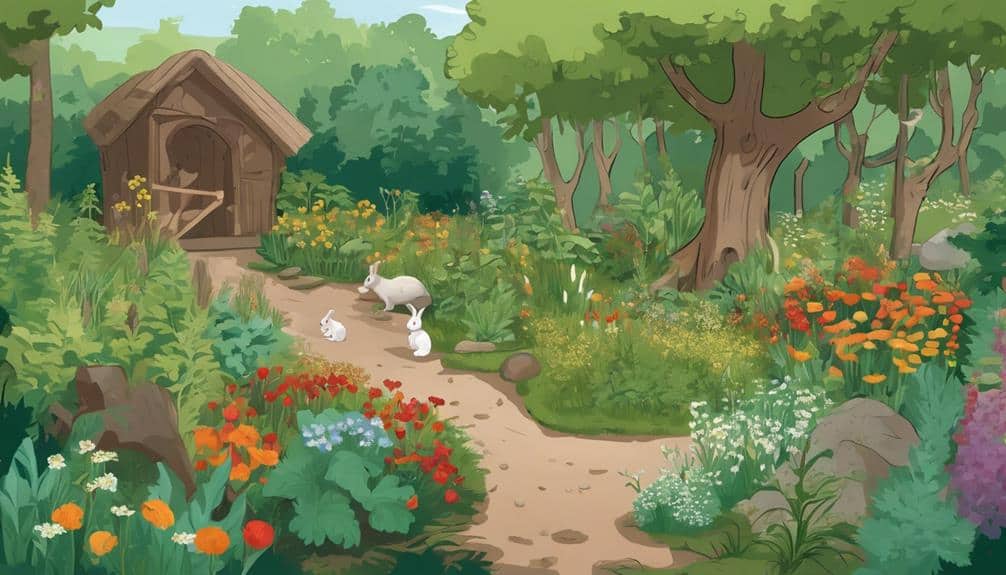
Wild rabbits instinctively seek out natural food sources and foraging areas to maintain their health and well-being in the wild. Their diet primarily consists of grass, plants, and leafy greens, providing essential nutrients for their overall health.
Foraging areas such as meadows, fields, and grassy patches offer rabbits the opportunity to graze and find food rich in fiber, crucial for digestion and dental health. Mimicking a wild rabbit's diet in captivity involves providing hay and fresh vegetables to make certain they receive adequate nutrition.
To enrich a rabbit's foraging experience, access to a variety of safe plants and grasses is beneficial, encouraging natural behaviors and promoting physical and mental stimulation. By incorporating these natural food sources and foraging areas into their habitat, you can help make certain your rabbit's well-being and satisfaction.
Safe Hideouts and Shelter Options
In order to make sure your rabbit feels secure and comfortable in its habitat, providing safe hideouts and shelter options is important. Here are three essential items to contemplate:
- Brush Piles: Creating brush piles in your rabbit's habitat can mimic natural hiding spots. Rabbits love to explore and hide in dense vegetation, so providing brush piles allows them to exhibit their natural behaviors. Make sure the brush piles are secure and free from any toxic plants.
- Water Bowl: Make certain your rabbit has access to a water bowl within its shelter options. Hydration is vital for your rabbit's health, and having a constant water source nearby encourages them to drink regularly. Change the water daily to keep it fresh and clean.
- Litter Tray: Designate specific toilet areas within your rabbit's shelter options by placing a litter tray. Rabbits can be trained to use a litter tray, making it easier to maintain cleanliness in their living space. Use rabbit-safe litter, such as paper-based or wood pellets, to absorb odors and moisture effectively.
Enrichment Activities and Play Areas
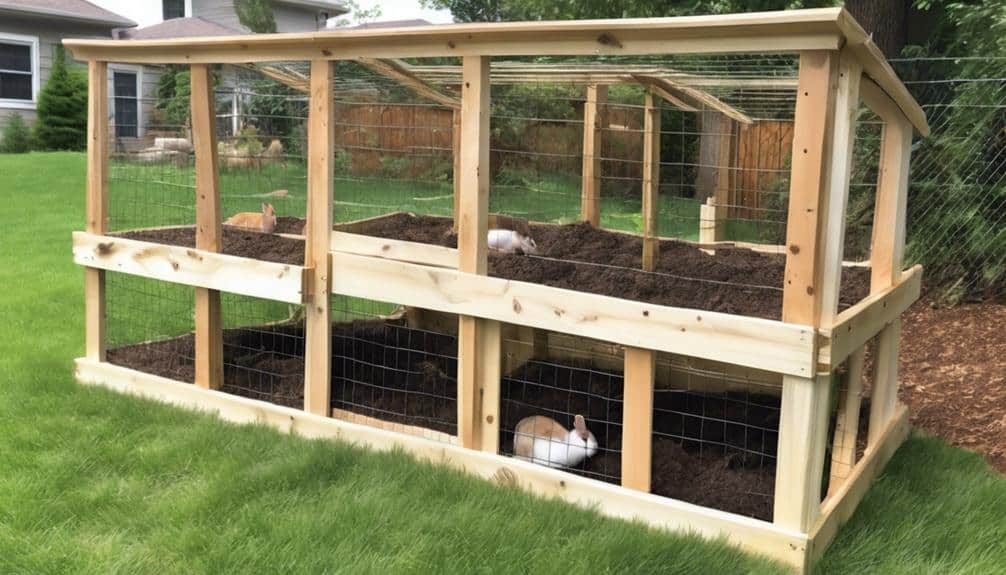
Enrich your rabbit's habitat with stimulating activities and engaging play areas to nurture their natural instincts and well-being. Providing tunnels, boxes, and cardboard tubes can keep your rabbit entertained and mentally stimulated.
Play areas equipped with safe toys, tunnels, and digging boxes offer both physical and mental exercise for your furry friend. To make sure that your rabbit doesn't get bored, rotate toys regularly and rearrange play areas to encourage exploration.
Hiding treats in toys or setting up foraging activities can mimic natural behaviors, keeping your rabbit engaged. In colder winter months, make certain that your rabbit has enough space to hop and stretch their legs without their ears getting too cold.
Outdoor playpens with secure fencing and natural elements like branches and logs can provide a safe and enriching environment for your rabbit to explore. Keep a close eye on your rabbit's play areas and activities to guarantee they stay happy and healthy.
Frequently Asked Questions
How Do You Make a Natural Rabbit Habitat?
To make a natural rabbit habitat, you should provide outdoor burrow options, indoor enrichment activities, digging opportunities, hideaway spaces, and foraging activities. These elements mimic a bunny's natural environment, promoting their physical and mental well-being.
What Is the Best Natural Habitat for Rabbits?
For rabbits, the best natural habitat provides outdoor burrows, indoor enrichment, foraging opportunities, safe hiding spots, and abundant native vegetation. Create a secure environment with these elements to assure their well-being and natural behaviors.
What Habitats Do Rabbits Prefer?
Rabbits prefer habitats with outdoor shelters for security, foraging opportunities for food, burrowing spaces for nesting, foliage variety for nutrition, and elevated platforms for surveillance. Providing these elements guarantees their well-being and natural behaviors.
What Does a Bunny Habitat Need?
In a bunny habitat, outdoor shelters provide safety, safe play areas encourage exercise, burrowing opportunities mimic natural behavior, foraging challenges promote mental stimulation, and socialization spots offer companionship. These elements create a enriching environment for bunnies.
What Are the Best Natural Bunny Habitats in Alaska?
Alaska offers a variety of natural habitats for bunnies, with top plants Alaskan bunnies prefer. Willow, fireweed, and clover are essential for their diet and provide ideal shelter. The diverse landscape of forests, meadows, and wetlands in Alaska offers the best natural bunny habitats with these top plants.
Conclusion
In summary, establishing a natural habitat for your bunny is vital for their overall well-being.
By providing ample space, suitable bedding, natural food sources, safe shelters, and engaging enrichment activities, you can guarantee that your bunny is happy and healthy.
Remember, a happy bunny is a hoppy bunny!
So, make sure to cater to their natural instincts and needs to create a thriving habitat that mimics their wild environment.

